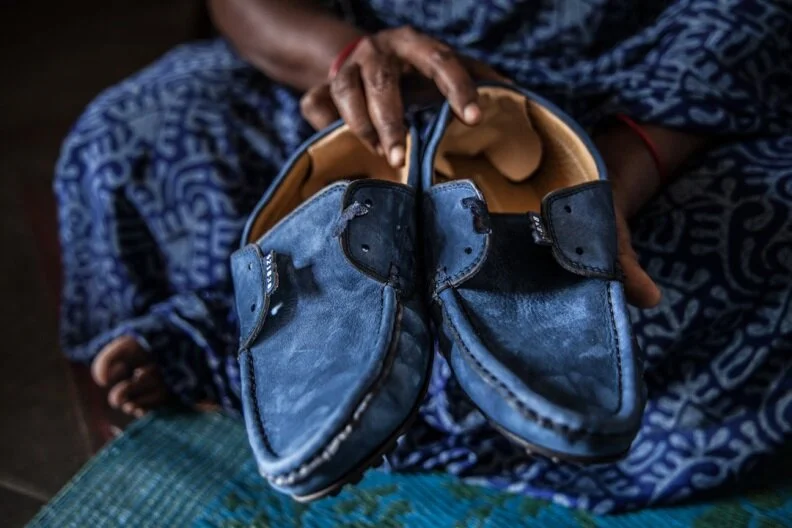
Stitching Our Shoes
Rights for homeworkers in the leather footwear industry.
HWW has been working on the issue of women homeworkers stitching leather shoes for many years, in many different countries. Women homeworkers play a key role in the production of leather shoes for multinational retailers and brands. Working in Bulgaria, Portugal, India or Chile, homeworkers in the leather footwear industry do a similar job - hand stitching shoe uppers, particularly for moccasin or boat style shoes.
These women all face similar problems - They produce goods with a high retail value, yet work in poor conditions with low pay, no rights or job security.
This needs to change.
For the past decade we’ve been working with Cividep, our local partners in Tamil Nadu, South India. Shoes produced in Tamil Nadu are exported to many different countries, including the UK and Europe. In 2015, we worked with partners to research Stitching Our Shoes, a report detailing the issues faced by these homeworkers.
Thousands of women in Ambur, Tamil Nadu, work as homeworkers stitching shoes for export. These women earn less than 10p for a pair of shoes sold in the UK for between £40-£100.
Their pay is low and insecure.
Sumitra, a homeworker in Ambur explained, "Today we may earn 50 rupees but there is no guarantee that we will have work tomorrow."
This work provides essential income, but pay is below minimum wage, let alone living wage. Homeworkers have no rights or protection. They are not recognised as workers and do not get employment benefits such as health insurance, pensions, or health and safety protection.
Yet their work is vital to the industry. The hand stitching of the uppers is one of the most labour-intensive stages in the production of many styles sold by UK retailers.
Homeworkers need this work, but they also need better working conditions, and in Ambur they are organising to fight for their rights.
What needs to change?
VISIBILITY: Brands and retailers need to map their supply chains to understand and recognise the role of homeworkers. They need to work with homeworkers and their organisations to improve pay and conditions.
RECOGNITION: Homeworkers should be recognised as workers with equal rights, as stated in the ILO Convention on Homework (177)
TRANSPARENCY: We need regulation for greater transparency from companies and legislation requiring companies take responsibility for conditions in their supply chains wherever in the world they are sourcing from.
ORGANISING: To achieve this we need to support homeworkers in organising to build a strong voice, and put pressure on companies to listen to their demands.
Resources
We have done extensive work in the leather footwear industry over the years. You can download all our reports and publications on this subject below.
Homeworkers in South India's Leather Footwear Industry
This 2014 briefing explores the role of homeworkers in Tamil Nadu's leather footwear industry, outlining what action is necessary to strengthen their position and improve their working conditions.
Stitching Our Shoes: Summary
A brief introduction to the main findings of our Stitching Our Shoes report. Produced by HWW, Labour Behind the Label and Cividep as part of the CHANGE YOUR SHOES campaign.
Stitching Our Shoes: Full Report
This in-depth research report explores the role of homeworkers in global supply chains, their poor pay and working conditions and the possibilities for change.




